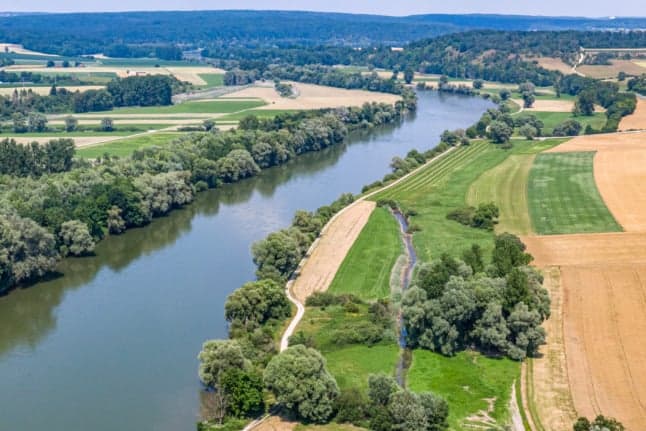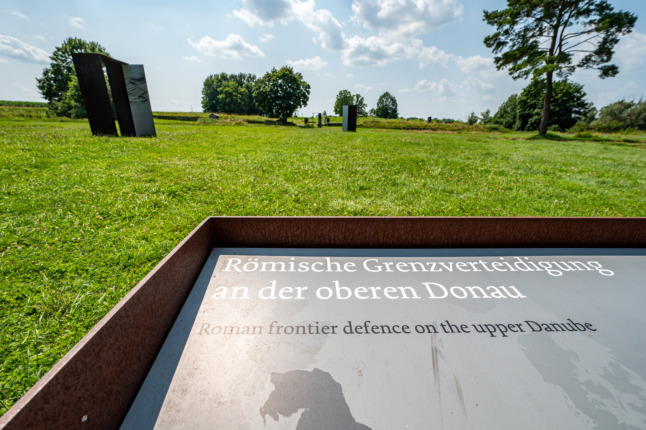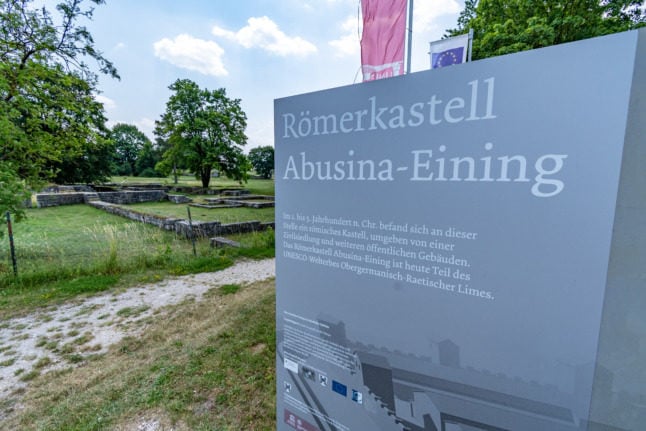Bavaria's Danube Limes becomes UNESCO world heritage site

The Danube Limes, which stretches through southern Germany to Slovakia and marks the borders of the Roman Empire, was added to the World Heritage List on Friday.
Welcoming the decision, heritage experts said ancient sites smattered along the meandering river Danube Limes were an "outstanding testimony" to Roman civilisation.
Germany has now submitted six successful applications in the current series of UNESCO meetings, which has been running since July 16th and will continue until Saturday.
Four applications have previously been successful this year: the spa towns of Bad Ems, Baden-Baden and Bad Kissingen; the Lower Germanic Limes; the Mathildenhöhe Darmstadt; as well as Jewish sites in Speyer, Worms and Mainz.
Only cultural and natural sites of outstanding universal value are designated as world heritage.
Before the decision on Friday, tension had risen after Hungary left the joint application with Germany, Austria and Slovakia at short notice. The committee then postponed the decision that was actually planned for Monday and initially set up a working group for further deliberations.
READ ALSO: Travel: Five stunning UNESCO sites that tell Germany’s history
In pointed comments made after the announcement, Michelle Müntefering, Minister of State for International Cultural Policy in the Foreign Office, described the accolade as a sign of international cooperation.

A sign points the way to an old Roman defence frontier. Photo: picture alliance/dpa | Armin Weigel
"The Danube Limes not only honours a special landscape of monuments, but also recognises the longstanding cooperation with Austria and Slovakia." she said. “The task now is to add sites in the eastern section of the Danube to the western sections of the Limes."
The Danube 'connected different worlds'
"For the Romans, the Danube was not just a natural border, it was also an important connection route for goods and, above all, for ideas," said Maria Böhmer, President of the German Commission for UNESCO. “The Danube Limes not only separated, but also connected very different worlds.
READ ALSO: UNESCO adds spa towns in France, Germany and Austria to World Heritage list
"It is an outstanding testimony to Roman civilisation, whose strength has always been to absorb external influences," said Böhmer. "I am delighted that the World Heritage Committee has honoured the Danube Limes today."

The remains of a roman fort near the Danube. Photo: picture alliance/dpa | Armin Weigel
The registered section of the Danube Limes runs over 600 kilometres from Lower Bavaria via Austria to Slovakia. For centuries soldiers and their families were stationed there, working and living on the “wet Limes”.
The 77 sub-areas of the transnational world heritage site include ground monuments, such as the remains of legionary camps, forts and civil settlements.
The Lower Germanic Limes was added to the UNESCO World Heritage List on Tuesday. The borders of the Roman Empire are thus recognized as World Heritage from Scotland to Slovakia.
Comments
See Also
Welcoming the decision, heritage experts said ancient sites smattered along the meandering river Danube Limes were an "outstanding testimony" to Roman civilisation.
Germany has now submitted six successful applications in the current series of UNESCO meetings, which has been running since July 16th and will continue until Saturday.
Four applications have previously been successful this year: the spa towns of Bad Ems, Baden-Baden and Bad Kissingen; the Lower Germanic Limes; the Mathildenhöhe Darmstadt; as well as Jewish sites in Speyer, Worms and Mainz.
Only cultural and natural sites of outstanding universal value are designated as world heritage.
Before the decision on Friday, tension had risen after Hungary left the joint application with Germany, Austria and Slovakia at short notice. The committee then postponed the decision that was actually planned for Monday and initially set up a working group for further deliberations.
READ ALSO: Travel: Five stunning UNESCO sites that tell Germany’s history
In pointed comments made after the announcement, Michelle Müntefering, Minister of State for International Cultural Policy in the Foreign Office, described the accolade as a sign of international cooperation.

A sign points the way to an old Roman defence frontier. Photo: picture alliance/dpa | Armin Weigel
"The Danube Limes not only honours a special landscape of monuments, but also recognises the longstanding cooperation with Austria and Slovakia." she said. “The task now is to add sites in the eastern section of the Danube to the western sections of the Limes."
The Danube 'connected different worlds'
"For the Romans, the Danube was not just a natural border, it was also an important connection route for goods and, above all, for ideas," said Maria Böhmer, President of the German Commission for UNESCO. “The Danube Limes not only separated, but also connected very different worlds.
READ ALSO: UNESCO adds spa towns in France, Germany and Austria to World Heritage list
"It is an outstanding testimony to Roman civilisation, whose strength has always been to absorb external influences," said Böhmer. "I am delighted that the World Heritage Committee has honoured the Danube Limes today."

The remains of a roman fort near the Danube. Photo: picture alliance/dpa | Armin Weigel
The registered section of the Danube Limes runs over 600 kilometres from Lower Bavaria via Austria to Slovakia. For centuries soldiers and their families were stationed there, working and living on the “wet Limes”.
The 77 sub-areas of the transnational world heritage site include ground monuments, such as the remains of legionary camps, forts and civil settlements.
The Lower Germanic Limes was added to the UNESCO World Heritage List on Tuesday. The borders of the Roman Empire are thus recognized as World Heritage from Scotland to Slovakia.
Join the conversation in our comments section below. Share your own views and experience and if you have a question or suggestion for our journalists then email us at [email protected].
Please keep comments civil, constructive and on topic – and make sure to read our terms of use before getting involved.
Please log in here to leave a comment.